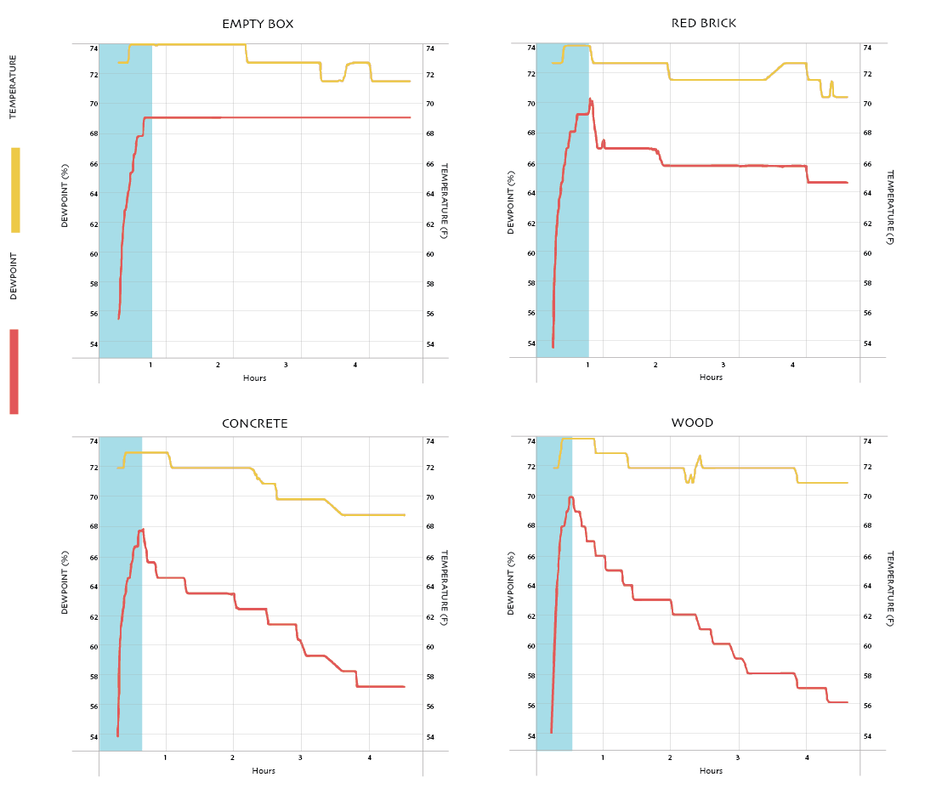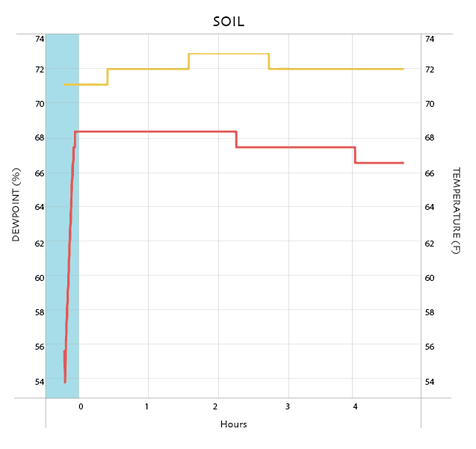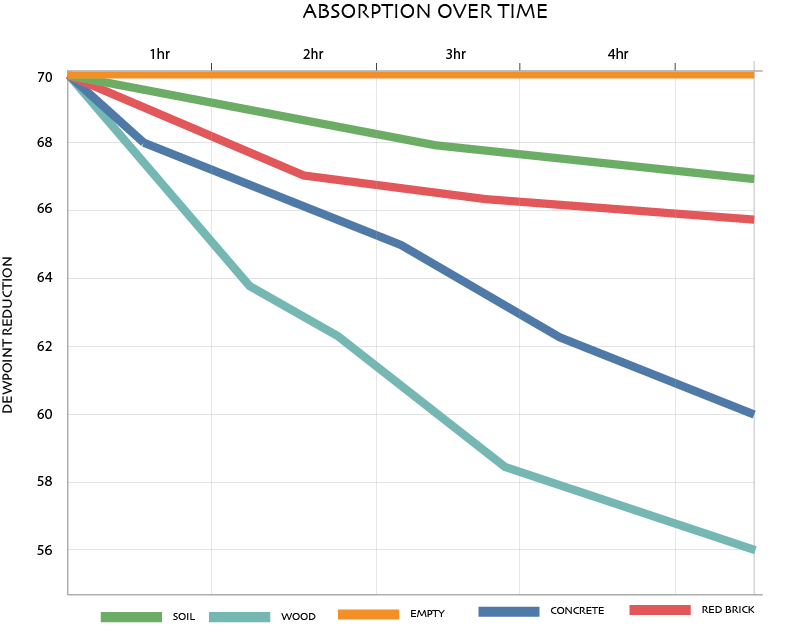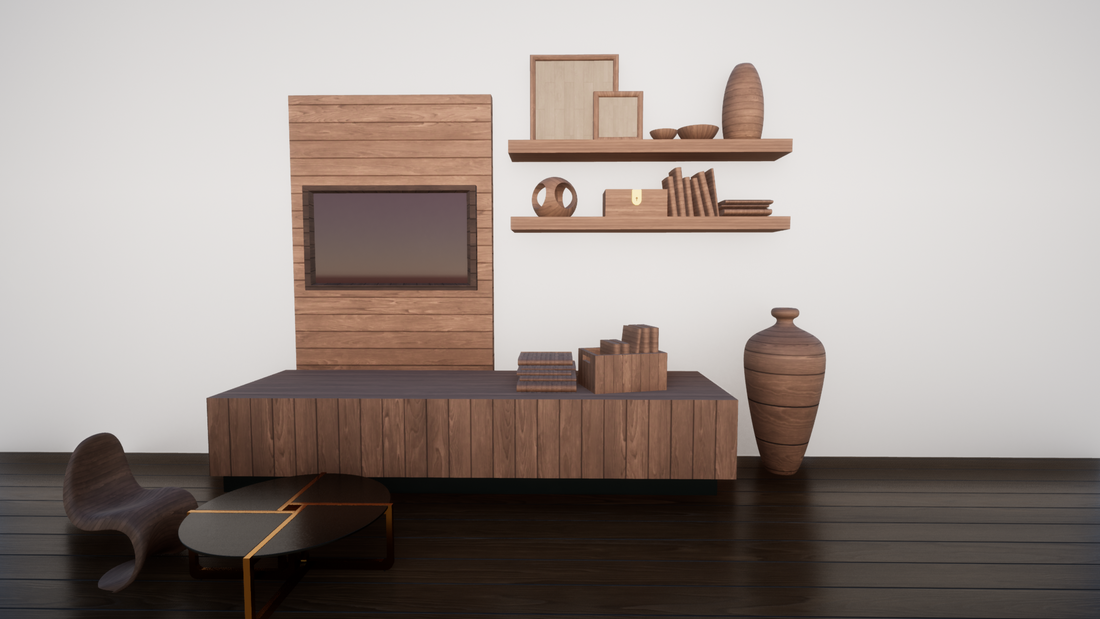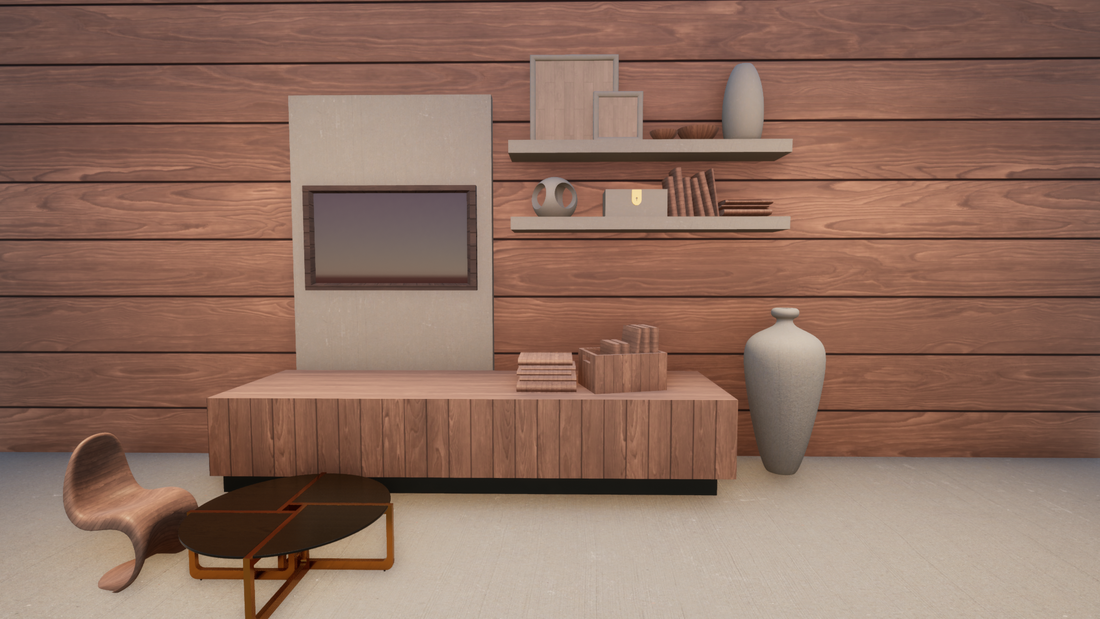Results
Overall the data showed the originally anticipated results. Wood absorbed the most in comparison to the rest of the test materials. The series of experiments revealed that during the first hour every material began to absorb the moisture in the test chamber at a faster rate than the remainder of the experiment. The red clay brick showed a 2 hr stall in moisture absorption. This was unexpected but was explained upon further research. Originally the anticipated results for clay were that it would be much more effective at absorbing moisture because of its porous nature. However, though clay brick is highly porous, it is impermeable. It is important to note that porosity is not the same as permeability. Porosity is the measure of void spaces in a given material, whereas permeability is when a given material allows liquid or gasses to pass through. The remaining two materials, wood and concrete performed at a steady rate. The concrete uptake performance reflected the predictions of the literature review. The wood was projected to absorb less than the concrete brick however because the wood was untreated, it had more porous surface area.
MATERIAL |
WEIGHT BEFORE (lbs) |
WEIGHT AFTER (lbs) |
CHANGE |
Wood |
3.2 |
3.62 |
0.42 |
Clay Brick |
4.0 |
4.1 |
0.1 |
Concrete Brick |
4.4 |
4.6 |
0.2 |
The results for soil were completely unexpected. The soil was in fact expected to uptake more moisture than all of the building materials combined. However the soil moisture uptake was the least effective. This is because the soil does not work alone in green walls. However these results can still be used to compare against porous materials.
Material dew point absorption over time.
Material % reduction.
Next Steps
Though wall and floor materiality are important factors to consider during design, ceiling and furniture materiality should be considered as well. The tests that were conducted assume a single material within an empty room, but what happens when the space is filled with furniture that uses materials with effective moisture buffer performance? Or instead of a green wall opt for a texture wall with moisture buffer qualities. These materials could be tested within the testing chamber either alongside the wall and floor materiality or on its own.
Room Material Variations rendered in Lumion
The materials that were used in this experiment all have the same surface area, but an additional experiment could be conducted where the materials surface area varies to reflect the different shapes and sizes that typically exist in a home or office.
